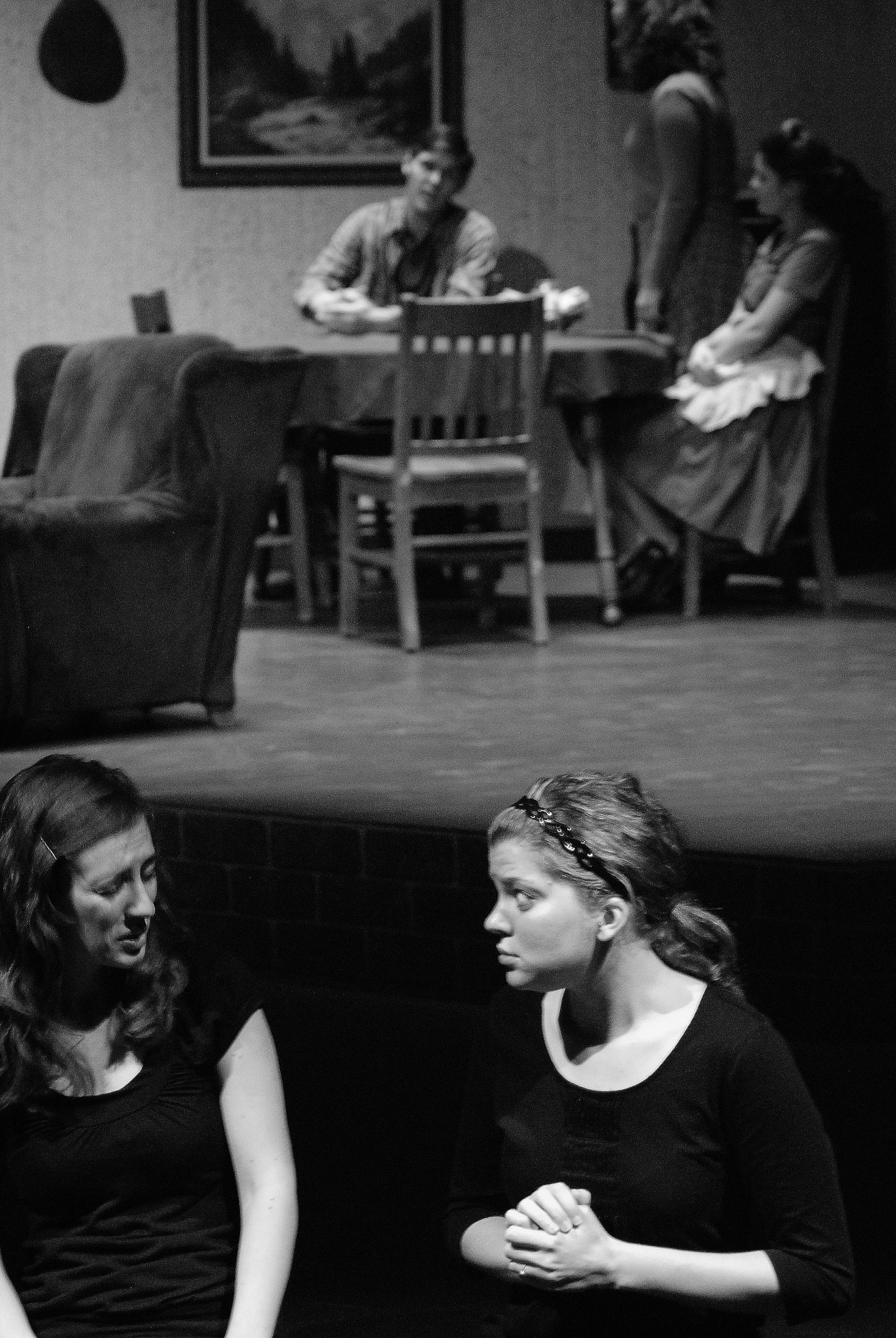Dressed in black, standing onstage, American Sign Language (ASL) interpreters express a language not for our ears, but for our eyes. Though their work goes mostly unappreciated by hearing audiences, the work interpreters put into their craft is complex and subtle.
Preparation is key for ASL interpreters. “A transcript is the most ideal,” saud Sarah Rutt, a senior ASL major, “but that almost never happens.” Usually the interpreters get a summary of the content they will be interpreting so they can look up vocabulary related to the subject.It won’t always be this easy though. “In the real world, we won’t have the opportunity to get much background prior to the assignment,” said Rutt, who hopes to be a professional interpreter one day.
Professional interpreters are often freelancers. They take assignments as they come, so they need to be ready for anything.
Dress code for interpreters is strict. Rutt explains that their shirts are a backdrop for the language. Light-skinned people must wear darker colors and darker-skinned interpreters must wear light colors in order to show contrast.
Besides interpreting at chapel services, ASL students also go into classrooms to interpret lectures and discussions. They do this not to interpret for deaf students but so they can practice their craft and learn complex vocabulary.
Angelica Lehman, a senior ASL major, interpreted a nutrition class. “I was so overwhelmed,” she said. “Everything was so extensive.”
When interpreters come across a word that they don’t know the sign for, they must resort to finger spelling. “If you can explain the concept or sign around it,” said Rutt, “that would be ideal.”
“In general,” Lehman added, “finger spelling is kind of a cop-out.”
Some words, such as proper names, are always finger spelled.There is a big difference, said Brittany Lentz, a senior ASL major, between interpreting and translating. Translating, says Lentz, is “when you take one ‘hard’ text, like the Bible, and turn it into another language.”
“Whereas we,” she said, “are taking a very visual language, something you can’t put on paper, and using it to interpret English meaning.”
There is also a concept of transliterating, which Lehman explains as “using English grammar and turning the words into signs.” This is not preferred, but is sometimes used when a uniquely English meaning is difficult to interpret in ASL.
ASL has its own unique grammar structure apart from English. The phrase “I went to work” would be interpreted as “work I went” in ASL. In chapel, the interpreters try to stay true to ASL structure, “but sometimes it just comes out as transliteration,” Rutt admits.
The word interpretation suggests subjectivity, so how often do interpreters need to read between the lines? “All the time,” says Rutt, “especially in theater interpreting.”
ASL students often interpret theater shows for the public. In theater, ASL interpreters must find ways to express meaning creatively.
What a person is saying versus what they are meaning is a difficult line to tread, explained Lentz. “You don’t want to err on the side of explaining the true meaning behind everything. But if all the hearing people get it, you need to explain it in ASL.”
Usually the interpreters play more than one character, so they must change their body position and physical affect to reflect the switch. “It’s just like playing a character,” said Lentz.
Lehman says that interpreting theater [the British-American difference] is difficult for her. “I’m not good at memorizing,” she said, “and sitting in a chair for two hours is really hard for me.”
Lentz says chapel services are enjoyable and easy to interpret: “It’s just a lot of songs with churchy words. It’s fun.”
Because music is intended only for hearing people, ASL interpreters must convey a sense of rhythm with their body when interpreting songs. “You want to move to the flow of the music,” says Lentz. “If it’s soft music, you need to look graceful.” If the music is vibrato, they show that through vibrating their hands.
Lehman likens their interpretation of music to an iTunes visualizer. “You need to respond to how the music is going,” she said.
The goal for interpreters is “dynamic equivalence,” which prioritizes experience over literal understanding. “We need to make a deaf person a part of the audience,” Rutt said. “If everyone is laughing at something and a deaf person isn’t, you know something is off.”
Poetry is a difficult subject to interpret, since ASL can’t mimic alliteration or rhyme. But there are ASL poems too. Rhyming in ASL means repeating a sign, or several signs, with similar hand shapes or patterns.
Rutt, Lentz and Lehman all hope to be professional interpreters when they graduate.



